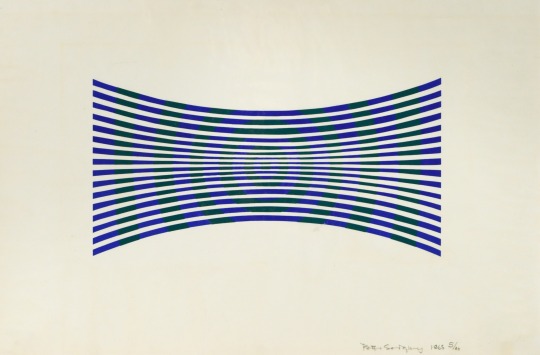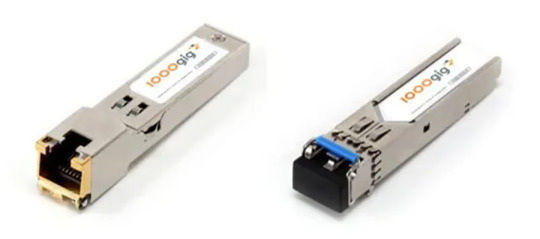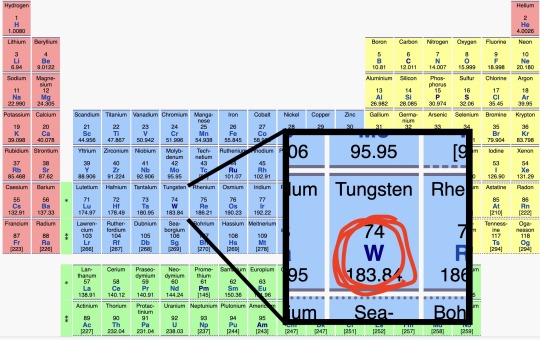#Optical Modules
Explore tagged Tumblr posts
Text
Standard Military-Grade Mini-SFF Optical Transceiver Modules

The STAROS/USOT series of Mini-SFF Optical Transceiver Modules encapsulates the transmitting and receiving components within a compact metal housing, enhancing the module's electromagnetic interference (EMI) resistance. By activating the Transmit Disable pin (TDIS)
0 notes
Text
Core components of optical modules and their role in optical communication systems
As a vital component of optical fiber communication systems, optical modules play a key role in photoelectric conversion. In this article, we will introduce the core components of optical modules and their role in optical communication systems.
First, let's talk about TOSA (Optical Emission Sub-Module). The main function of TOSA is to convert electrical signals into optical signals, including lasers, MPD (modulation preamplifier), TEC (temperature controller), isolators, MUX (multiplexer), coupling lenses and other devices. In optical modules used in data centers, TEC, MPD, and isolators are not necessary in order to reduce costs. In addition, the LDD (laser diode driver) of some optical modules is also packaged in TOSA. In the chip manufacturing process, the wafer is epitaxially made into a laser diode, and then matched with components such as filters and metal covers, and packaged into a TO can (Transmitter Outline can). This TO can is then packaged with ceramic sleeves and other components into Photonic modules (OSA), finally combined with electronic submodules.
Secondly, we want to mention LDD (Laser Diode Driver). The function of LDD is to convert the output signal of CDR (clock and data recovery) into the corresponding modulation signal, thereby driving the laser to emit light. Different types of lasers require different types of LDD chips. In short-distance multi-mode optical modules, generally speaking, CDR and LDD will be integrated on the same chip.
Next is ROSA (optical receiving sub-module). The main function of ROSA is to convert optical signals into electrical signals. The built-in devices mainly include PD (photodiode)/APD (avalanche photodiode), DeMux (demultiplexer), coupling components, etc. PD is usually used for short-distance and medium-distance optical modules, while APD is mainly used for long-distance optical modules.
In addition, there are CDR (clock and data recovery) chips, whose function is to extract the clock signal from the input signal and find the phase relationship between the clock signal and the data. Simply put, it is to recover the clock. At the same time, CDR can also compensate for signal losses on wiring and connectors. Most optical modules for high-speed and long-distance transmission use CDR chips.
In addition, a TIA (Transimpedance Amplifier) is used with the detector to convert the optical signal into a current signal and amplify it into a voltage signal of a certain amplitude. In optical communication systems, PIN-TIA optical receiver is a commonly used detection device that can convert weak optical signals into electrical signals and amplify them into signals with a certain intensity and low noise.
Finally, there is the LA (limiting amplifier), which processes the output amplitude of the TIA into a stable voltage signal to provide stable voltage for the CDR and decision circuit signals. In high-speed modules, LA is usually integrated with TIA or CDR.
To sum up, the core components of the optical module include TOSA, LDD, ROSA, CDR, TIA, LA and MCU. According to different scenarios and needs, it is crucial to select and use different types of optical modules, especially the type and modulation method of the laser according to the transmission rate, transmission distance and different wavelengths. These core components together form an optical module, which provides important support for the stable operation and efficient transmission of optical communication systems.
0 notes
Text

Peter Sedgley, ( 19 March 1930 - 16 March 2025)
Blue and Green Modulation, Numbered 5/30, screenprint, 32 x 48cm
#art#abstract#abstraction#forms#abstractart#op art#modulation#rip#peter sedgley#space artist#optical#screenprint#blue#green
29 notes
·
View notes
Text



So I bought another DBAL A2/PEQ-15A lol
old one was too crusty to use, but I liked the aesthetic and the form factor so much I just bought a minty one off the 'gray market'.
Now god willing this thing doesn't give me any trouble cause if it breaks, there's no way to get it serviced unless FDA full power laser regulations magically disappear.




I'll take some lightbox photos of it on the URG-I later.
7 notes
·
View notes
Text
🔍 How to Choose the Right 10G SFP+ Transceiver?
Before plugging in — make sure you're using the right module for the right job 👇
✅ Cable Type: • MMF ➝ SR (300m) • SMF ➝ LR/ER/ZR (10–80km)
✅ Distance Matters: Don’t overpay for 80km if 1km is enough.
✅ DDM/DOM Support: Monitor real‑time temp, signal & power 🔥📊
✅ Brand Compatibility: Cisco, Juniper, HPE? Know before you buy.
✅ OEM/ODM Options: Custom labeling & testing = easier integration.
💡 Tip: Always check datasheets & test before deployment.


🔗 DM us to get free samples or compatibility reports.
2 notes
·
View notes
Text

Sunny days are perfect for ✨ science ✨
(jk every day is perfect for science <3)
#i was so nervous before the previous semester started#bc i worried id suck at physics#and then i ended up with this really demanding lab instructor#the first module my group covered in lab was optics#and i actually enjoyed it a lot and got some pretty good grades#which made me so happy i got myself this tiny prism :)#mine#studyblr#op
29 notes
·
View notes
Text
What Is An Optical Transceiver? What Does It Do? And What Sizes Do They Come In?

When it comes to telecommunications and data transmission, the optical transceiver is a vital element, which enables the rapid and efficient exchange of data and information across vast distances.
Serving as a crucial component within networks, data centres, and communication systems, an optical transceiver seamlessly combines the worlds of optics and electronics, converting data into optical signals for transmission along fibre optic cables.
Transceivers plays a pivotal role in the provision of high-speed internet, cloud computing, and telecommunications, which all assist with the global connectivity that we know enjoy and rely upon in this digital age.
To continue reading about this please click here.
#compatibleopticaltransceivers#compatibletransceivers#fiber#fiberoptics#fibre#fibreoptics#modules#optics#opticaltransceiver#opticaltransceivers#transceiver#transceivers
4 notes
·
View notes
Text
Wow I didn't recognize it at all!!! Lowkey looks like a glass sphere with inverted Newton rings around it
Said Newton rings for reference:



Sideways Planet Uranus
#Just me being physics nerd and remembering Newton rings from recent optics module#planet uranus#sky#astronomy#stars#space#cosmos#Newton rings
2K notes
·
View notes
Link
The article discusses the impact and evolution of the 1911 pistol, originally designed by John Moses Browning in .45 ACP and known for its reliability and performance in both military and civilian contexts. It highlights the new Springfield Armory 1911 DS Prodigy Compact pistols, which offer improvements with a double-stack magazine for increased capacity, particularly in 9mm. The Prodigy series, including the recently released Prodigy Compact AOS with barrel lengths of 3.5" and 4.25", has become notable for its affordability, ergonomic design, and enhanced capabilities, like greater comfort and concealability, along with advanced features such as the Agency Optic Systems (AOS) for optics compatibility. The article emphasizes the Prodigy's safety features, excellent trigger mechanism, and overall performance, positioning it as a versatile choice for self-defense and competitive shooting aficionados. The Prodigy Compact's MSRP is listed at $1,549, suggesting it delivers significant value for its price.
#Springfield Armory#1911 DS Prodigy#compact 9mm pistol#double stack magazine#optics-ready slide#match-grade barrel#recoil management system#Tactical Rack U-Dot sight#enhanced ergonomics#polymer grip module#innovative design#modern capabilities.
1 note
·
View note
Text
Lightweight, Small Optical Zoom Camera Module for UAV Drones | KT&C

KT&C Co., Ltd.'s optical zoom camera module for UAV drones is suitable to a wide range of industries, including military and defense, providing greater operational flexibility.
These camera modules are designed to satisfy the specific needs of aerial photography, surveillance, and other applications where lightweight, small, and high-performance imaging capabilities are required.
KT&C Global Shutter 2MP ATC-HZ8305J-L and 1.58MP ATC-HZ5530T-LP
The KT&C ATC-HZ8305J-L and ATC-HZ5530T-LP Ultra-Compact Full HD Camera Modules have exceptional imaging capabilities. This cutting-edge camera module gives you the features you need to get great results in your projects, especially the mini-payload for UAVs and drones.
KT&C ATC-HZ8305J-LN the Full HD auto focus optical zoom global shutter block camera is a modern camera with enormous capabilities, providing exceptional performance in different applications.
Its ultra-compact design, with a length of only 55 mm and a weight of 41g, houses a powerful 5x optical zoom, making it suitable for current housings and restricted space installations.
With Global Shutter technology, this camera avoids rolling shutter effects and captures images with unparalleled accuracy. Digital Image Stabilization guarantees that footage remains steady even in dynamic environments. Motion detection improves security, and the Image Flip (E-Flip) feature allows for flexible image orientation.
The 1/2.6" CMOS sensor, with 2.3 MP and 1920x1200 resolutions, ensures excellent image clarity. The camera has multiple video outputs, including LVDS and CVBS, and supports 1080p@60 (50fps).
This camera performs well in a variety of lighting circumstances thanks to features such as AGC, WDR, and an AF Optical Zoom lens with 5x optical and 16x digital zoom. Whether it's auto/manual interval shooting or exact presets, the camera allows you to customize the focus and exposure.
The camera's robust design offers digital WDR, 3DNR, and defog capabilities, ensuring high-quality images. The RS232 TTL interface supports smooth communication with a variety of protocols, including VISCA, Pelco-D, and Pelco-P.
This camera gives great performance across a wide range of applications, including security and surveillance, robotics, and video conferencing. Its compact dimensions (28.2x39x54.7mm without case) and lightweight design (approx. 41g without case) make it suited for a variety of settings. This camera can operate in temperatures ranging from -10℃ to +50℃, making it suitable for demanding environments.
If you are looking for an optical zoom camera and zoom module for UAV drones, you can find them at KT&C.
Click here to if you are interested in KT&C products.
View more: Lightweight, Small Optical Zoom Camera Module for UAV Drones
0 notes
Text
The Power of 1064nm Fiber Acousto-optic Modulators
Laser technology has revolutionized countless fields, but precise control over its output is crucial. This article explores 1064nm fiber acousto-optic modulators (AOMs), a powerful technology for generating high-power, short-pulsed lasers at the 1064nm wavelength, a commonly used infrared region.
The Need for Short Pulses in 1064nm Lasers:
The 1064nm wavelength offers numerous advantages, including efficient transmission through optical fibers and strong material interaction. However, continuous-wave (CW) lasers operating at 1064nm often lack the power and focus needed for certain applications. This is where 1064nm fiber AOMs come in.

Acousto-optic Modulation for Pulse Generation:
AOMs utilize sound waves to modulate light. In a 1064nm fiber AOM, an acoustic wave is generated within a special crystal. This wave diffracts a portion of the 1064nm laser beam passing through the crystal, allowing for control over its intensity.
Benefits of 1064nm Fiber AOMs:
High Power Handling: These AOMs can withstand high-power 1064nm laser beams, making them suitable for demanding applications.
Compact Design: Fiber-coupled design offers a compact and lightweight solution compared to traditional free-space AOMs.
High Efficiency: Efficient light coupling between the fiber and the AOM crystal minimizes light loss.
Fast Switching: AOMs can switch light beams at high speeds, enabling the generation of short laser pulses.
Applications of Short-Pulsed 1064nm Lasers:
Material Processing: High-power, short pulses enable precise material removal in processes like micromachining and laser drilling.
LIDAR (Light Detection and Ranging): Short pulses provide the peak power needed for long-range distance measurement and remote sensing.
Medical Applications: Precise tissue ablation for delicate procedures is possible with short, intense pulses generated by AOM-based lasers.
Pumping Other Lasers: These lasers can be used to pump other laser types, enabling the generation of different wavelengths and pulse characteristics.
Integration with Fiber Optics:
The fiber-coupled design of 1064nm fiber AOMs simplifies integration with existing fiber optic systems. This allows for efficient light delivery and remote control of the laser pulse characteristics.
0 notes
Text
Scientists torturing backronyms/acronyms happens a lot, actually (see my tags for examples)
Backronyms
Physicists suck at naming things (I can say this because I'm a MechE and I have had to deal with so many physicists), but occasionally they have a stroke of brilliance. Like, a friend of mine worked on a dark matter detector called DarkSide. That's so goofy that it wraps back around to good.
Anyway, there's this superconducting fusion reactor in france called WEST. It's notable for having first-wall shielding tiles (the innermost surface of the vacuum chamber, directly facing the fusion plasma) entirely made of tungsten.
There are a lot of materials used for plasma-facing components – tungsten, molybdenum, graphite, beryllium, various composites and combinations of the above – but it's pretty rare for a reactor to go full tungsten. It can take extremely high temperatures, but it's brittle and expensive, and "high-Z" (high molecular weight) impurities in the plasma cause their own issues. So, the main purpose of WEST is to investigate the viability of an all-tungsten first wall and divertor.
To that end, they tortured an acronym until they got it to work:
Tungsten Environment in Steady-state Tokamak
Or "WEST"

Get it?
GEW IW??
#let me name a few from mars-related things in order of least to most ridiculous:#one of the least bad ones: Mars Atmosphere and Volatile EvolutioN (MAVEN)#INterior exploration using Seismic Investigations Geodesy and Heat Transport (InSight)#ESCApe and Plasma Acceleration and Dynamics Explorer (ESCAPADE) (they really used 67% of the whole word there huh)#MArs RadIation environment Experiment (MARIE) (radiation detector on Mars Odyssey)#TElescopic Nadir imager for GeOmOrphology (TENGOO) (a camera on MMX)#Mars-moon Exploration with GAmma rays and NEutrons (MEGANE) (spectrometer on MMX) (MMX team sure loves destroying backronyms)#Optical RadiOmeter composed of CHromatic Imagers (OROCHI) (could you guess it's MMX again?)#that's all I can find off the top of my head but here please be as tortured as I am about this#EDIT: I FORGOT TO MENTION SCHIAPARELLI LANDER'S OFFICIAL NAME#ExoMars EDM#EDM standing for EDL Demonstrator Module#EDL standing for Entry Descent and Landing#they shoved a whole-ass acronym in their acronym
978 notes
·
View notes
Text

So update on the PEQ15A
Turns out this unit wasn't just handled rough, it was purposefully demilled - glass in both apertures are busted out and while the laser seems to work fine, the illuminator pattern is fucked, focus knob won't diverge or converge the beam.
Thankfully I paid literally nothing on this unit so it's zero loss to me outside of being a little disappointing.

But honestly? I might try to buy one in better condition later down the road. I hate the idea of buying gray market FP lasers, but this thing is just so damn pretty with its colors and the form factor is just what I like for a long gun laser.
In the meantime, I still wanna get a Holosun IRIS-3 or AMMJ Penumbra for the Fauxveske™️first.
#peq15#peq15a#steiner optics#dbal a2#multi function aiming laser#laser aiming module#nightfighting rifle#night vision#urgi
5 notes
·
View notes
Text

What is a Transceiver in a Data Center? | Fibrecross
A transceiver in a data center is a device that combines the functions of transmitting and receiving data signals, playing a critical role in the networking infrastructure. Data centers are facilities that house servers, storage systems, and networking equipment to manage and process large amounts of data. To enable communication between these devices and with external networks, transceivers are used in networking equipment such as switches, routers, and servers.

Function and Purpose
Transceivers serve as the interface between networking devices and the physical medium over which data is transmitted, such as fiber optic cables or copper cables. They convert electrical signals from the equipment into optical signals for fiber optic transmission, or they adapt signals for copper-based connections, depending on the type of transceiver and network requirements.
Types of Transceivers
In data centers, transceivers come in various forms, including:
SFP (Small Form-factor Pluggable): Commonly used for 1G or 10G Ethernet connections.
QSFP (Quad Small Form-factor Pluggable): Supports higher speeds like 40G or 100G, ideal for modern data centers with high bandwidth demands.
CFP (C Form-factor Pluggable): Used for very high-speed applications, such as 100G and beyond.
These pluggable modules allow flexibility, as they can be swapped or upgraded to support different speeds, protocols (e.g., Ethernet, Fibre Channel), or media types without replacing the entire networking device.

Importance in Data Centers
Transceivers are essential for establishing physical layer connectivity—the foundation of data communication in a data center. They ensure reliable, high-speed data transfer between servers, storage systems, and external networks, which is vital for applications like cloud computing, web hosting, and data processing. In modern data centers, where scalability and performance are key, transceivers are designed to meet stringent requirements for speed, reliability, and energy efficiency.
Conclusion
In summary, a transceiver in a data center is a device that transmits and receives data signals in networking equipment, enabling communication over various network connections like fiber optics or copper cables. It is a fundamental component that supports the data center’s ability to process and share information efficiently.
Regarding the second part of the query about Tumblr blogs, it appears unrelated to the concept of a transceiver in a data center and may be a mistake or a separate statement. If you meant to ask something different, please clarify!
2 notes
·
View notes
Text
The Optical Modulators Industry: A Comprehensive Overview
Introduction
The optical modulators industry is experiencing rapid growth, driven by advancements in telecommunications, data centers, and emerging technologies like quantum computing. These devices play a crucial role in converting electrical signals into optical signals, enabling high-speed data transmission over long distances. This blog will delve into the current state of the optical modulators market, key trends, challenges, and future prospects.
Market Overview
Current Market Landscape
The Optical Modulators Market is projected to be valued at USD 5.69 billion in 2024 and is anticipated to grow to USD 12.58 billion by 2029, reflecting a compound annual growth rate (CAGR) of 17.19% during the forecast period from 2024 to 2029. The increasing demand for high-bandwidth communication, especially with the rise of 5G networks and fiber-optic technology, is a significant driver. Additionally, the proliferation of data centers and the Internet of Things (IoT) are fueling the need for efficient optical communication solutions.
Key Players
The market is characterized by the presence of several key players, including:
Nokia: A leader in telecommunications equipment and solutions, Nokia is investing heavily in optical modulator technology to enhance its network capabilities.
Finisar (now part of II-VI Incorporated): Known for its innovations in optical components, Finisar is a major supplier of optical modulators.
Intel: With a strong focus on photonics, Intel is developing advanced optical modulators to support its data center and cloud solutions.
Key Trends Shaping the Market
1. Rising Demand for Bandwidth
With the explosion of data consumption driven by streaming services, cloud computing, and IoT devices, there is an unprecedented demand for higher bandwidth. Optical modulators are essential for facilitating this demand, as they enable faster and more efficient data transfer.
2. Advancements in Technology
Technological innovations, such as silicon photonics and integrated optics, are leading to the development of more compact and efficient optical modulators. These advancements are crucial for applications in telecommunications and data centers, where space and energy efficiency are paramount.
3. Growth of 5G Networks
The rollout of 5G technology is significantly impacting the optical modulators market. 5G networks require high-speed data transmission and low latency, which are achievable through advanced optical modulation techniques. This trend is expected to accelerate the adoption of optical modulators in telecommunications.
4. Shift Towards Sustainable Solutions
As the world becomes more conscious of environmental issues, the demand for sustainable technology is growing. Optical modulators that offer lower power consumption and enhanced efficiency are increasingly favored, driving innovation in the industry.
Challenges Facing the Industry
Despite the promising growth, the optical modulators industry faces several challenges:
High Manufacturing Costs: The production of advanced optical modulators can be expensive, which may hinder market entry for new players.
Technological Complexity: As the technology evolves, the complexity of manufacturing and integrating these devices increases, requiring specialized knowledge and expertise.
Competition from Alternative Technologies: Emerging technologies, such as microwave photonics, may pose a competitive threat to traditional optical modulators.
Future Prospects
The future of the optical modulators market looks bright, with numerous opportunities for growth and innovation. Key areas to watch include:
Emerging Applications: As industries explore new applications for optical modulators, including in quantum computing and advanced sensing technologies, new market segments are likely to emerge.
International Collaborations: Increased collaboration between industry leaders, research institutions, and governments can accelerate innovation and drive market growth.
Investment in R&D: Continued investment in research and development will be essential for addressing current challenges and unlocking the full potential of optical modulation technologies.
Conclusion
The optical modulators industry is poised for significant growth in the coming years, driven by advancements in telecommunications, data transfer demands, and innovative technologies. As key players adapt to market trends and challenges, the development of more efficient and sustainable solutions will likely shape the future landscape of this dynamic industry. Keeping an eye on these developments will be crucial for stakeholders looking to capitalize on the opportunities presented by this ever-evolving market.
Whether you are an industry professional, a researcher, or simply someone interested in the tech landscape, the optical modulators market offers exciting prospects that are worth following. For a detailed overview and more insights, you can refer to the full market research report by Mordor Intelligence: https://www.mordorintelligence.com/industry-reports/optical-modulators-market
#Optical Modulators Market#Optical Modulators Market Size#Optical Modulators Market Share#Optical Modulators Market Analysis#Optical Modulators Industry
0 notes